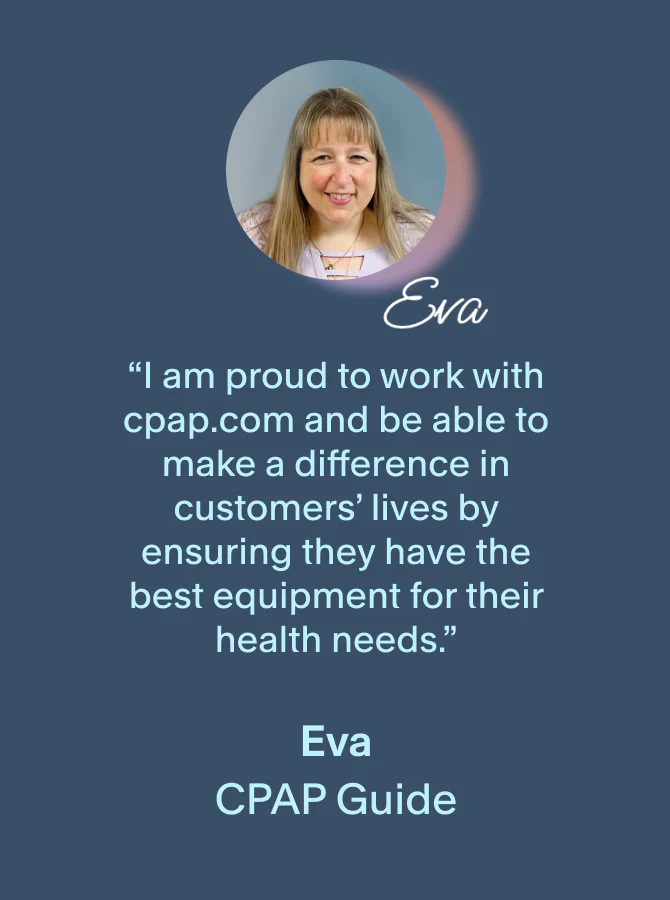Our content undergoes rigorous expert review, evidence-based research, and regular updates for accuracy.
💡 Key Takeaways
- Replace Dirty Filters: A clogged or old filter can cause bad odors and make your CPAP machine less effective. Replace or clean filters regularly to maintain air quality.
- Prevent Mold and Mildew: Humidity in your CPAP machine can lead to mold and mildew. Drain and dry the water reservoir and tubing each morning and clean your equipment weekly.
- Combat Bacteria Growth: Bacteria can thrive in the moist environment of your CPAP machine. Regular cleaning and disinfection can prevent bacterial buildup and associated odors.
- Keep Your Mask Clean: Oils and dirt from your skin can accumulate on your mask, causing unpleasant smells. Wash your face before bed and clean your mask regularly.
- Avoid Cleaner Residue: Some cleaning solutions can leave a lingering smell. Rinse your gear thoroughly after cleaning and consider using milder cleaning agents.
For millions of people with Obstructive Sleep Apnea (OSA), continuous positive airway pressure (CPAP) therapy is the key to better sleep and improved health. However, if you have ever slept with one of these machines, you may experience bad smells and funky odors.
As we discuss this topic further, we’ll go over the most common reasons why your CPAP smells bad and what to look for when determining the cause of a particular odor. Plus, we’ll list some of our best tips and tricks to help you avoid these stinky situations.
1. Dirty Filter
Your CPAP filter plays a vital role. As you may have guessed, CPAP filters are your first line of defense and will catch any harmful particles floating around in your environment, before they can enter your lungs. Over time, these filters can become clogged by debris, dust, smoke, microorganisms, etc.
As these contaminants accumulate, they can produce unpleasant odors. Additionally, a dirty filter can cause your machine to work harder and less efficiently. This can affect air quality and make your treatment less effective.
Signs of a dirty CPAP filter include the following:
- Musty, stale, or unpleasant odor
- Reduced airflow
- Increased noise coming from the machine
- An obvious build-up of debris along the filter
- Lung, airway, and/or throat irritation
How to Avoid a Dirty CPAP Filter
It is important to clean and replace the filter regularly to maintain the performance and hygiene of the CPAP machine. To avoid this, CPAP manufacturers suggest the following steps to keep up with your machine’s filter:
- Rinse your reusable filter with clean water at least every two weeks.
- Replace your reusable filter every six months.
- Replace your disposable filter every thirty days.
2. Mold or Mildew
When it comes to continuous positive airway pressure therapy, one of the top concerns is mold and mildew. While the humidification feature allows for a more comfortable CPAP experience, it is important to note that mold and mildew are likely to arise anywhere exposed to moisture, including the water reservoir, tubing, mask, or filter.
Along with producing a musty scent, their presence can also interfere with the performance of your device. These organisms have been linked to sinus infections, particularly if you have black mold in your CPAP reservoir.
Here are some of the most common signs that you have mold or mildew growing inside your CPAP equipment:
- Musty odor
- Equipment discoloration
- A notable build-up of a black, green, or red substance
- Respiratory irritation
- Sinus congestion
How to Avoid Mold and Mildew in Your CPAP
Remember that mold can arise within a day or two when exposed to a moist environment. So you do not want to skip out when it comes to cleaning and maintaining your equipment!
Here are some tips to prevent mold and mildew in your CPAP:
- Drain and dry the water reservoir and tubing each morning.
- Clean your equipment with mild soap and water at least once a week.
- Disinfect your gear with cleaning wipes or vinegar and paper towels between cleanings.
- Use distilled water in your reservoir.
- Clean and replace your filter when required.
- Replace your water reservoir every six months.
3. Bacteria Growth
Your CPAP equipment is the perfect environment for bacteria growth. Like mold, bacteria thrive in dark, damp, and warm environments. Bacteria can arise in many of the same parts where you would find mold. The risk for bacteria build-up is increased, however, due to the germs that you expel from your airway back into your equipment each time you exhale.
These factors can lead to the development of biofilm and may cause respiratory infections in individuals who sleep with a CPAP machine. The good news is that these complications are often a rare occurrence if you keep your equipment clean and disinfected.
It’s important to note that just because you don't see any bacteria colonies, doesn’t mean it isn’t there.
Below are some of the signs that you may have germs growing in your CPAP gear:
- Musty or foul odor
- Sinus and respiratory irritation
- Skin irritation around your face mask
- Existing mold or mildew growth
How to Avoid Bacteria Growth in Your CPAP
Because bacteria and mold arise from similar environments, the prevention tips for both are quite similar. Once again, keeping your equipment clean and dry is vital.
- Allow your water reservoir and tubing to drain and dry each day.
- Use mild soap and water to clean your equipment at least once a week.
- Clean and replace your filter as noted by your manufacturer.
- Disinfect your equipment using CPAP cleaning wipes or vinegar.
- Use distilled water when running your CPAP machine.
- Replace your water tank every six months.
4. Dirty Mask
Your skin is covered in oils, dirt, dead skin cells, bacteria, and so much more! Because your CPAP mask comes in direct contact with that skin each night, it tends to get pretty dirty. Plus, the fact that you’re breathing directly on it each night doesn’t necessarily help things. Without proper care, your mask can begin to develop a bit of an odor.
Signs that you have a dirty CPAP mask include:
- Presence of a foul or musty odor.
- Discoloration of your mask or its cushioning.
- Noticeable build-up of oil, dirt, debris, etc.
- Regular air leaks.
- Increased skin irritation or acne breakouts.
How to Avoid a Dirty CPAP Mask
Maintaining your mask means caring for your skin and keeping up with your equipment. Here are a few tips!
- Wash your face before going to bed.
- Wipe your mask down after you wake up each morning.
- Clean your mask and tubing with mild soap and warm water.
- Avoid touching the inside of your mask without washing your hands.
- Replace your mask and tubing every three months.
- Replace your cushion or nasal pillows at least once a month.
5. CPAP Cleaner Residue
Even if you notice that your CPAP smells bad, it is important to remember that you should never use regular household cleaners on your gear. Harsh chemicals can degrade your equipment. However, even some approved methods, such as vinegar, can have a strong odor that may be unpleasant or overpowering to some. Some people also have reported noticing a scent even after using CPAP sanitizing machines, particularly those that use ozone— a potent form of activated oxygen.
Here are some signs that your CPAP cleaner may be leaving residue or causing a smell:
- A strong odor that comes and goes but gets worse after cleaning.
- Skin sensitivity to surfaces that have been recently cleaned.
- Sticky or greasy residue along your equipment.
How to Avoid CPAP Cleaner Residue
If you regularly notice that the smell of whatever cleaning solution you use lingers for some time, and the scent bothers you, there are a few things you can do.
- Give your equipment time to air out after cleaning.
- Rinse your gear with water after cleaning.
- Clean your equipment immediately after waking up.
- Use gentle cleaners, such as mild soap and water.
- Avoid using an ozone-cleaning device.
Frequently Asked Questions
What Are the Signs of Mold in Your CPAP Machine?
A foul odor is one of the first signs of a moldy CPAP machine. If your equipment smells musty or unpleasant, it's time to clean it thoroughly. Other signs of mold growth include skin irritation, sore throat, and respiratory issues like coughing and wheezing. To avoid these symptoms, keeping your CPAP machine clean and dry is essential.
How Do I Remove the Ozone Smell from My CPAP Equipment?
If your CPAP machine has an ozone smell, it's likely due to using an ozone cleaner. To remove the odor, try washing your equipment with soap and water and allowing it to air dry. You can also try using a CPAP deodorizer or cleaning solution to eliminate odors.
How Can I Get Rid of the Smell in My CPAP Machine?
If your CPAP machine smells bad, there are several steps you can take to freshen it up. First, make sure you're using distilled water in the water reservoir. Tap water can contain minerals and other impurities that can lead to unpleasant odors. You can also try using a CPAP deodorizer or cleaning solution to eliminate odors and kill bacteria.
How Often Should CPAP Equipment Be Washed?
It's recommended to wash your CPAP equipment at least once a week with mild soap and warm water to prevent the growth of bacteria and mold. This includes the mask, tubing, and humidifier tank. You should also replace your mask cushion and filter every few months to ensure optimal performance.
Can You Get a Lung Infection From a Dirty CPAP Machine?
Yes, if you inhale mold spores or other contaminants from a dirty CPAP machine, it can lead to a lung infection. To avoid this risk, it's essential to clean your equipment regularly and use distilled water in the water reservoir.
Final Thoughts
When it comes to continuous positive airway pressure machines, strong odors may not always be a sign of concern. But if you notice a particularly foul smell, be aware that it could indicate the presence of mold or bacteria inside your equipment.
Of course, regardless of whether or not your CPAP smells bad, it is essential to keep your gear clean to avoid the health risks associated with dirty equipment. By following proper cleaning instructions, you can enjoy all the benefits of effective CPAP treatment, without the risk of infection.







